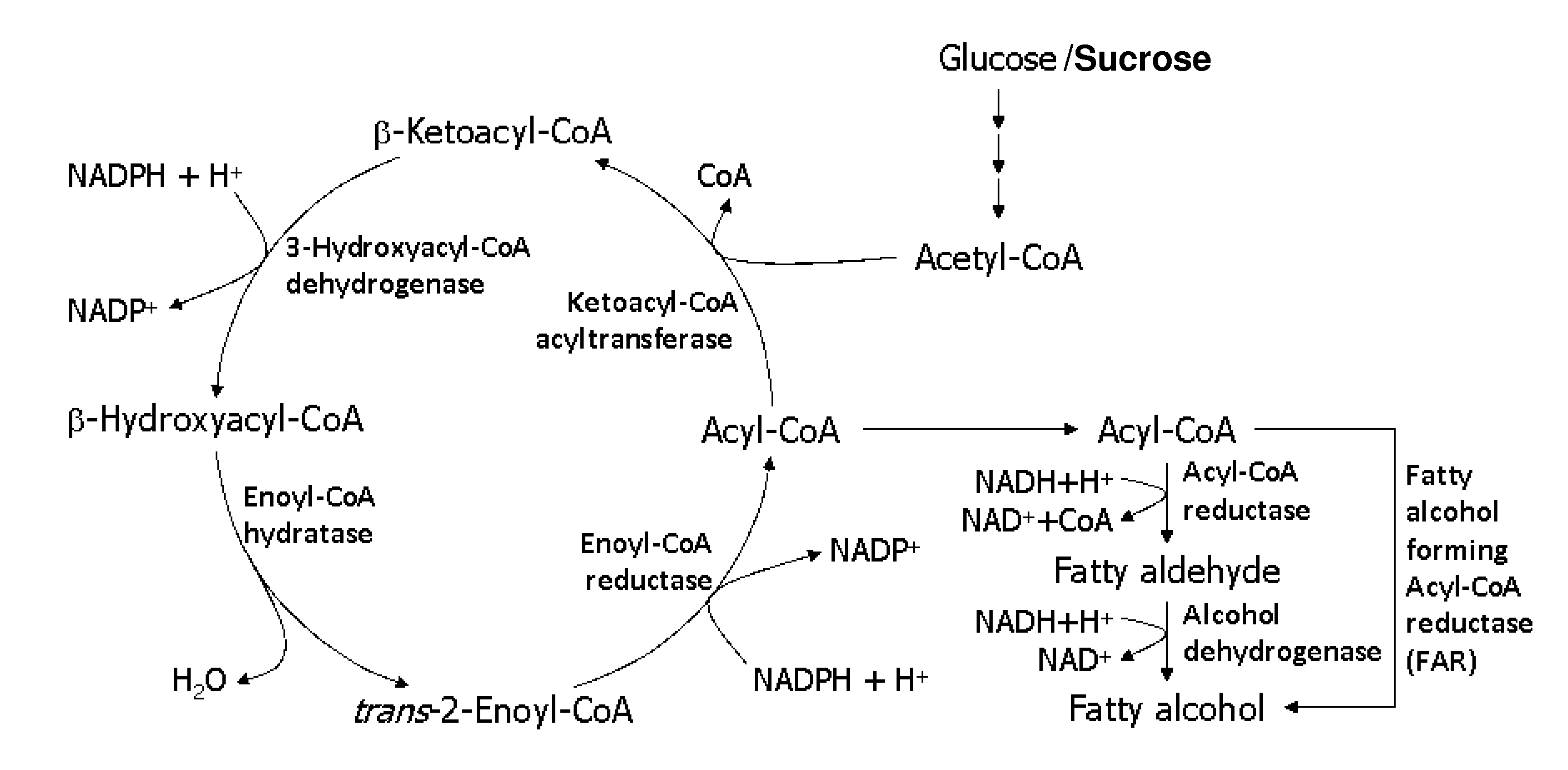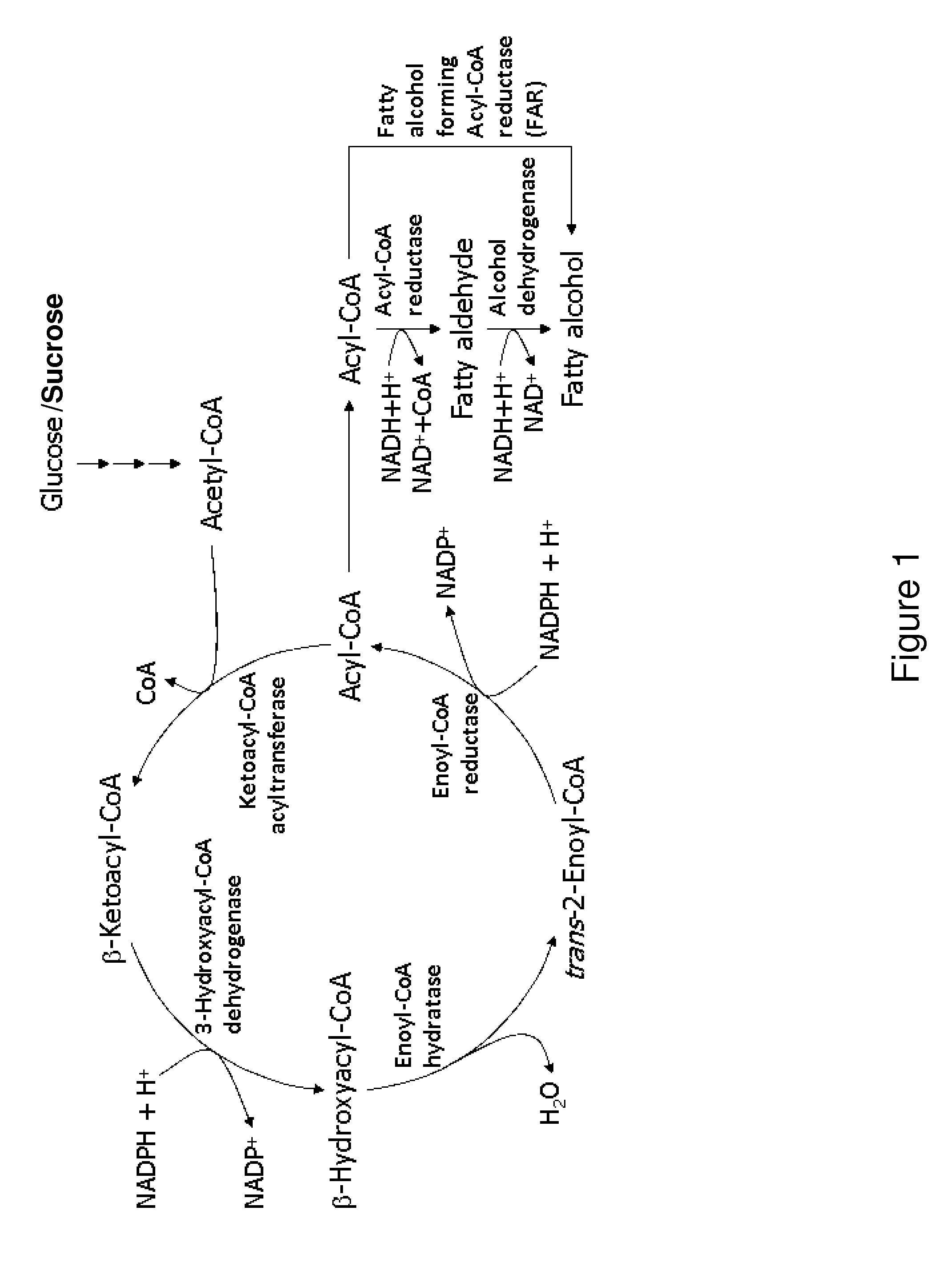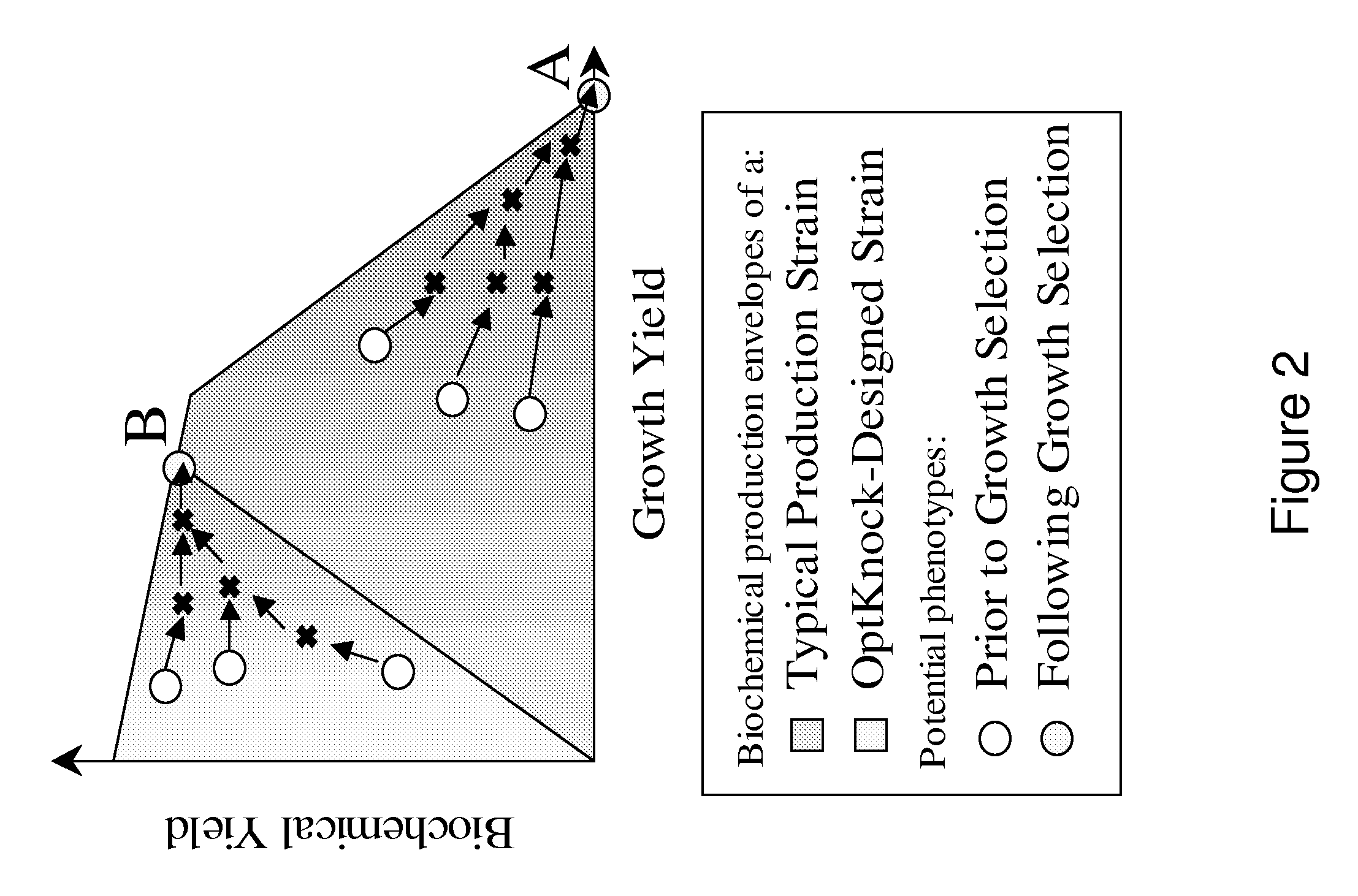Primary alcohol producing organisms
a technology of primary alcohol and producing organisms, which is applied in the direction of lyase, transferase, enzymology, etc., can solve the problems of not producing high yields of primary alcohol, not commercially viable to produce primary alcohol directly, and not producing primary alcohol. achieve the effect of reducing the activity of enzymes
- Summary
- Abstract
- Description
- Claims
- Application Information
AI Technical Summary
Benefits of technology
Problems solved by technology
Method used
Image
Examples
example i
[0282]This Example describes the generation of a microbial organism capable of producing primary alcohols using a malonyl-CoA independent FAS metabolic pathway and acyl-reduction metabolic pathways.
[0283]Escherichia coli is used as a target organism to engineer a malonyl-CoA-independent FAS and acyl-reduction pathway as shown in FIG. 1. E. coli provides a good host for generating a non-naturally occurring microorganism capable of producing primary alcohol, such as octanol. E. coli is amenable to genetic manipulation and is known to be capable of producing various products, like ethanol, effectively under anaerobic conditions.
[0284]To generate an E. coli strain engineered to produce primary alcohol, nucleic acids encoding the enzymes utilized in the malonyl-CoA-independent FAS and acyl-reduction pathway as described previously, are expressed in E. coli using well known molecular biology techniques (see, for example, Sambrook, supra, 2001; Ausubel supra, 19...
example ii
Microorganisms Having Growth-Coupled Production of LCA
[0290]This Example describes the construction in silico designed strains for the growth-coupled production of LCA.
[0291]E. coli K-12 MG1655 serves as the wild-type strain into which the disruptions are introduced. The disruptions are constructed by incorporating in-frame deletions using homologous recombination via the λ Red recombinase system of Datsenko and Wanner. (Datsenko, K. A. and B. L. Wanner, Proc Natl Acad Sci USA., 97(12):6640-5 (2000).) The approach involves replacing a chromosomal sequence (i.e., the gene targeted for removal) with a selectable antibiotic resistance gene, which itself is later removed. Knockouts are integrated one by one into the recipient strain. No antibiotic resistance markers will remain after each deletion allowing accumulation of multiple mutations in each target strain. The deletion technology completely removes the gene targeted for removal so as to substantially reduce the possibility of the...
example iii
Microorganisms Having Growth-Coupled Production of LCA
[0300]This Example describes the construction in silico designed strains for the growth-coupled production of LCA.
[0301]Gene deletions are introduced into S. cerevisiae by homologous recombination of the gene interrupted by the KanMX cassette, flanked by loxP sites enabling removal and recycling of the resistance marker (e.g. URA3) (Wach, A., et al., PCR-based gene targeting in Saccharomyces cerevisiae, in Yeast Gene Analysis, M. F. Tuite, Editor. 1998, Academic Press: San Diego). Starting with a loxP-kanMX-loxP sequence on a plasmid, an artificial construct with this sequence flanked by fragments of the gene of interest are created by PCR using primers containing both 45-50 bp target sequence followed by a region homologous to the above cassette. This linear DNA is transformed into wild-type S. cerevisiae, and recombinants are selected by geneticin resistance (Wach, A., et al. supra]. Colonies are purified and tested for correct...
PUM
| Property | Measurement | Unit |
|---|---|---|
| Fraction | aaaaa | aaaaa |
| Volume | aaaaa | aaaaa |
| Volume | aaaaa | aaaaa |
Abstract
Description
Claims
Application Information
 Login to View More
Login to View More - R&D
- Intellectual Property
- Life Sciences
- Materials
- Tech Scout
- Unparalleled Data Quality
- Higher Quality Content
- 60% Fewer Hallucinations
Browse by: Latest US Patents, China's latest patents, Technical Efficacy Thesaurus, Application Domain, Technology Topic, Popular Technical Reports.
© 2025 PatSnap. All rights reserved.Legal|Privacy policy|Modern Slavery Act Transparency Statement|Sitemap|About US| Contact US: help@patsnap.com



